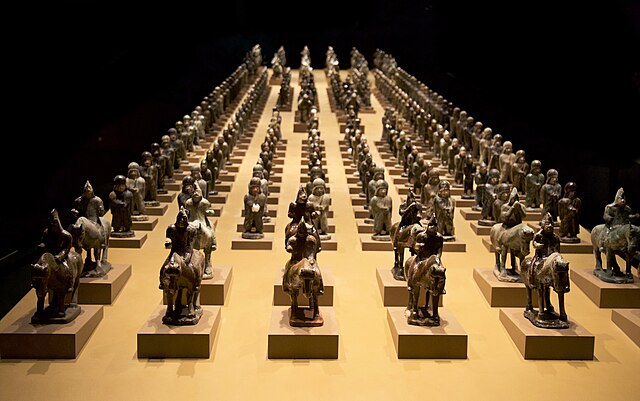Qi, known as the Northern Qi, Later Qi (後齊) or Gao Qi (高齊) in historiography, was a Chinese imperial dynasty and one of the Northern dynasties during the Northern and Southern dynasties era. It ruled the eastern part of northern China from 550 to 577. The dynasty was founded by Gao Yang, and was eventually conquered by the Xianbei-led Northern Zhou dynasty in 577.
Mural painting from the tomb of Gao Yang.
Northern Qi Bodhisattva, Changzi-xian, Shanxi, dated 552.
The Anyang funerary bed (550-577 CE), made for a Sogdian merchant in Anyang, during the Northern Qi dynasty.
The owner of the Anyang funerary bed, a Sogdian merchant.
Northern and Southern dynasties
The Northern and Southern dynasties was a period of political division in the history of China that lasted from 420 to 589, following the tumultuous era of the Sixteen Kingdoms and the Eastern Jin dynasty. It is sometimes considered as the latter part of a longer period known as the Six Dynasties (220–589). Albeit an age of civil war and political chaos, it was also a time of flourishing arts and culture, advancement in technology, and the spread of Mahayana Buddhism and Daoism. The period saw large-scale migration of the Han people to the lands south of the Yangtze. The period came to an end with the unification of all of China proper by Emperor Wen of the Sui dynasty.
Army of Northern Wei terracotta soldiers in Xianbei uniform, tomb of Sima Jinlong, 484 CE.
Northern Wei officer. Tomb statuette, Luoyang Museum.
Northern Wei Buddha Maitreya gilt-bronze figurine, 443
Civil officer, Western Wei, 535–557








